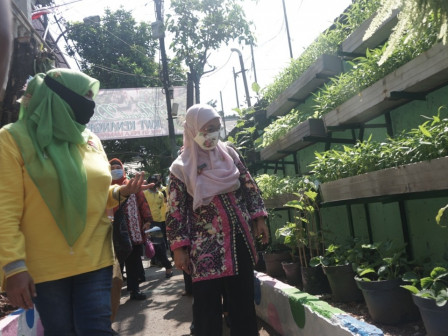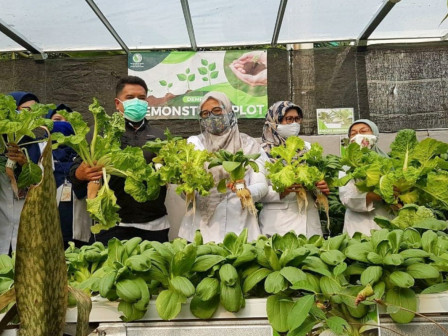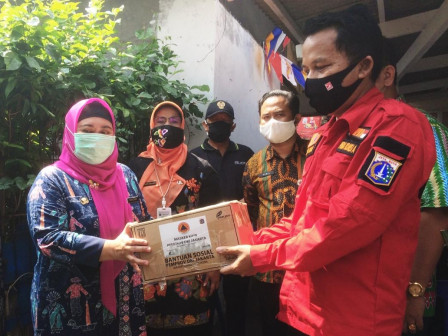Urban Farming in South Jakarta is Effective in Improving People's Economy
Reported by Aldi Geri Lumban Tobing | Translated by Nugroho Adibrata
Jakarta Maritime, Agriculture and Food Security Agency once again monitored and evaluated urban farming in four locations across South Jakarta, on Thursday (8/27).
Besides alley green, urban farming makes use of the top floor space of mosques and schools
Jakarta KPKP Agency's Agriculture Division Head Mujiati said that one of them was in Kebon Baru Urban Village, Tebet. At this location, 14 out of 17 RWs had implemented urban farming driven by the Karang Taruna youth organization.
"Besides alley green, urban farming makes use of the top floor space of mosques and schools. Even the location has good potential and can touch the supermarket, there are residents who offer their 700 square meters of land to be processed," she expressed.
Urban Farming Trends in Jakarta Continue to Increase and QualityThe next target was in RW 02 Bangka Urban Village, Mampang Prapatan. Its residents had mapped and studied market needs before carrying out agricultural activities.
She detailed the plants planted were basil, kale and arugula. Basil was sold at Rp 60,000 per kg, kale Rp 80,000 per kg and arugula Rp 120,000 per kg. These vegetables had been regularly supplied to two cafes.
"In a month, they need 100 kg to meet demand and has been continuous. They will provide education to other communities thus when there is a lot of demand they are not overwhelmed," she told.
The last location visited was Kenanga Women Farmers Group (KWT) in RW 01 Pela Mampang Urban Village, Mampang Prapatan. The location itself had character, as there were many preparations produced including Moringa meatballs and vegetable noodles.
"Besides planting, it is also used for families and local residents for consumption. Surely its existence must be added to increase production," she told.
Pela Mampang Urban Village RW 01 Chairman Romy Sudaryatmo positively welcomed it. Until now, there were 42 cadres in 14 RTs manage urban farming in their respective neighborhoods.
"If the crop is abundant, the result is immediately entered into the treasury. It is sold between cadres and the community. We appreciate the presence of the government which provides guidance and direction, as well as assistance such as the procurement of seeds and toga," she closed.





